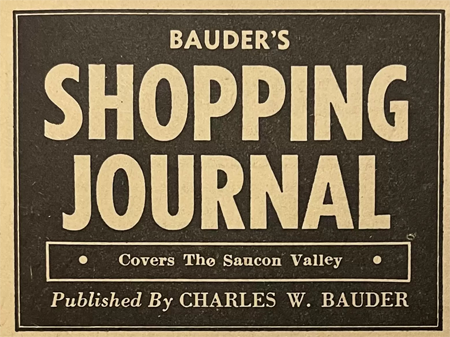
Lee Weidner wrote about Bauder’s Shopping Journal, “In an ealier era, everyone read Bauder’s Shopping Journal.” The Shopping Journal was circulated in Hellertown and 35 other locations an including by the office holders at the courthouses in Easton and Allentown.
The caption of the photo below (from Images of America: Hellertown) reads:
Charles W. Bauder, “Pokey”, covered Hellertown like a blanket in his weekly Shopping Journal. On April 26, 1952, this photograph was taken in his small office, which was located within Ed Brown’s Electric Company on Main Street. His office was here between 1950 and 1955, but “Pokey” wore out plenty of shoe leather around town, gathering the big stories.
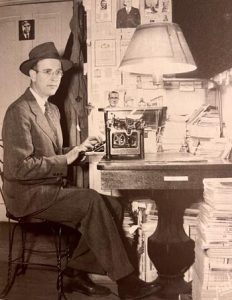
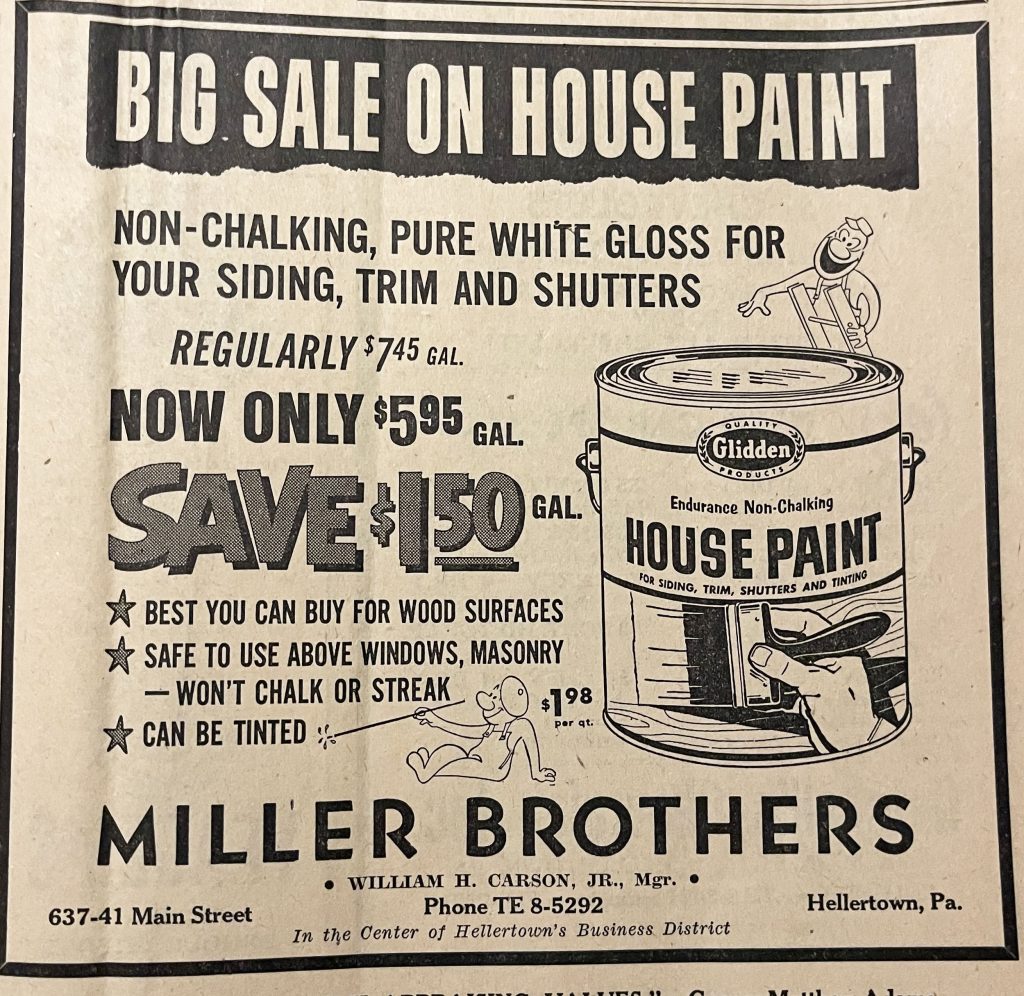
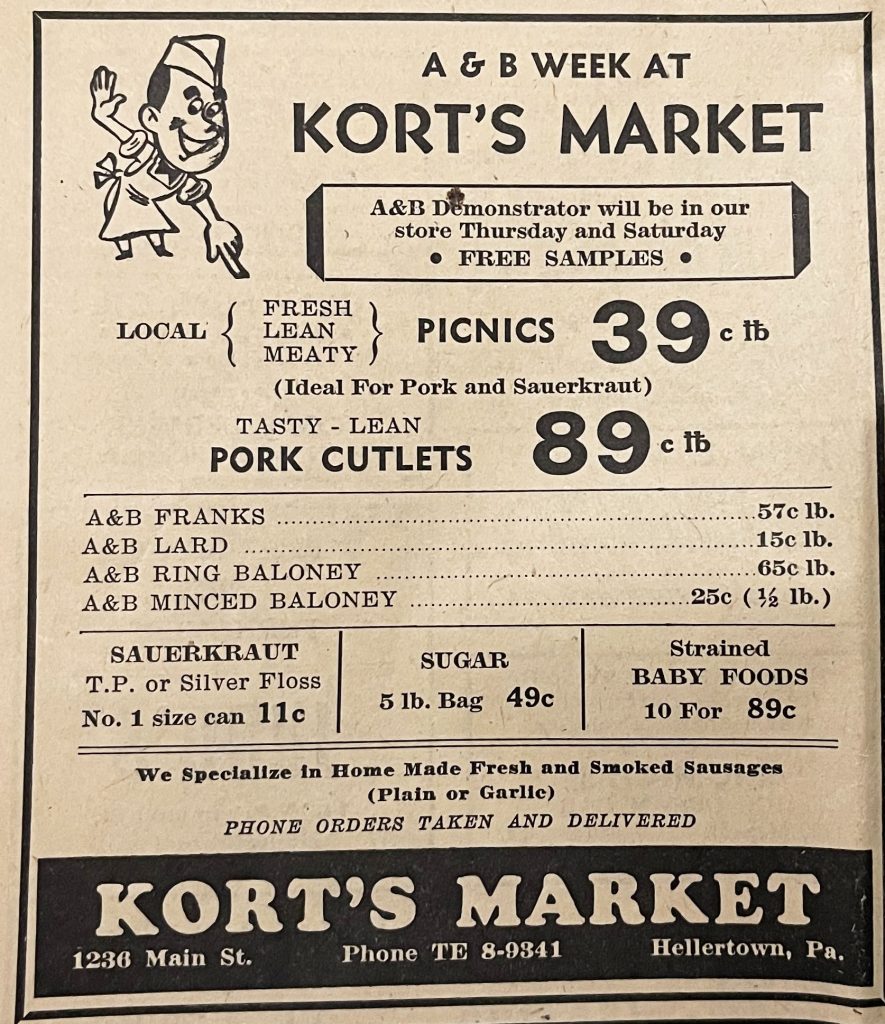
. A quick look at the prices in the Journal helps you understand that this edition was published in 1959, Wednesday, June 10, 1959, to be exact.
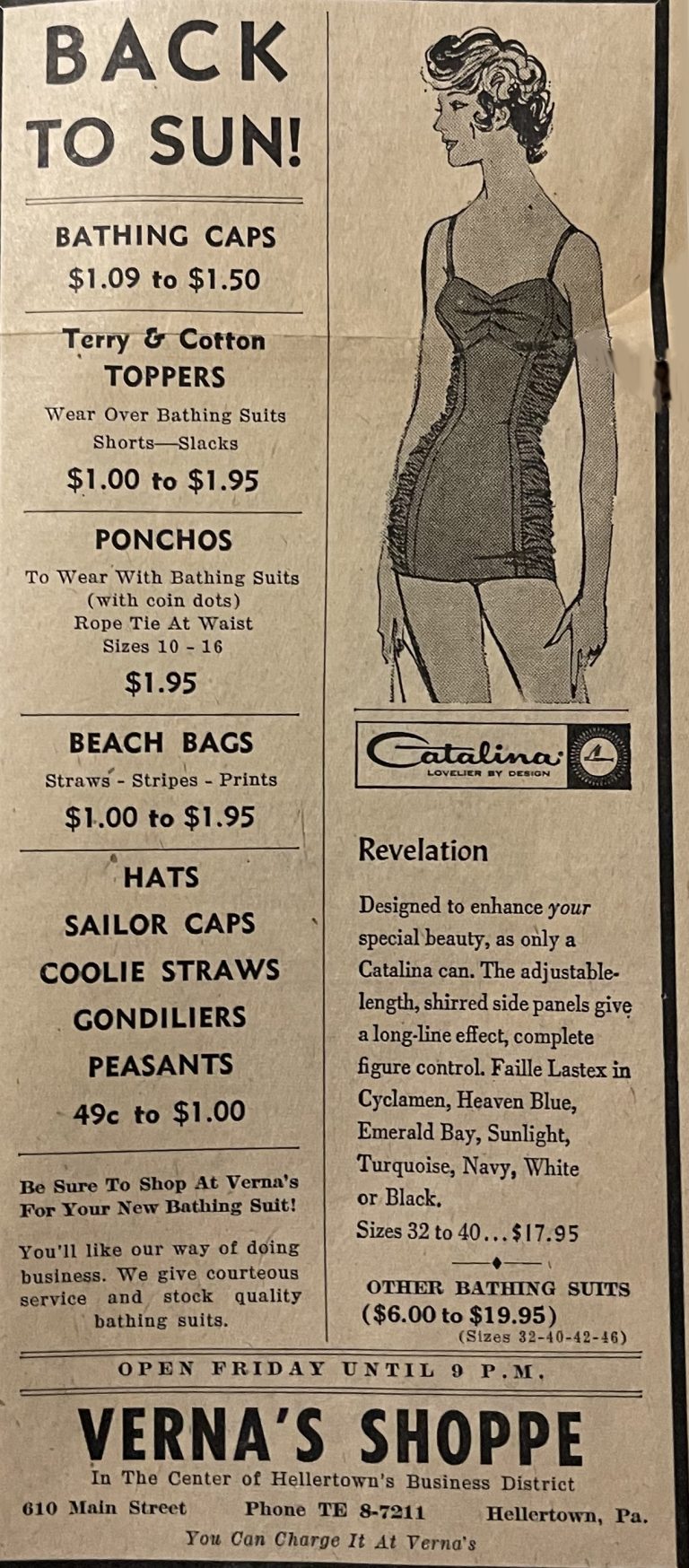
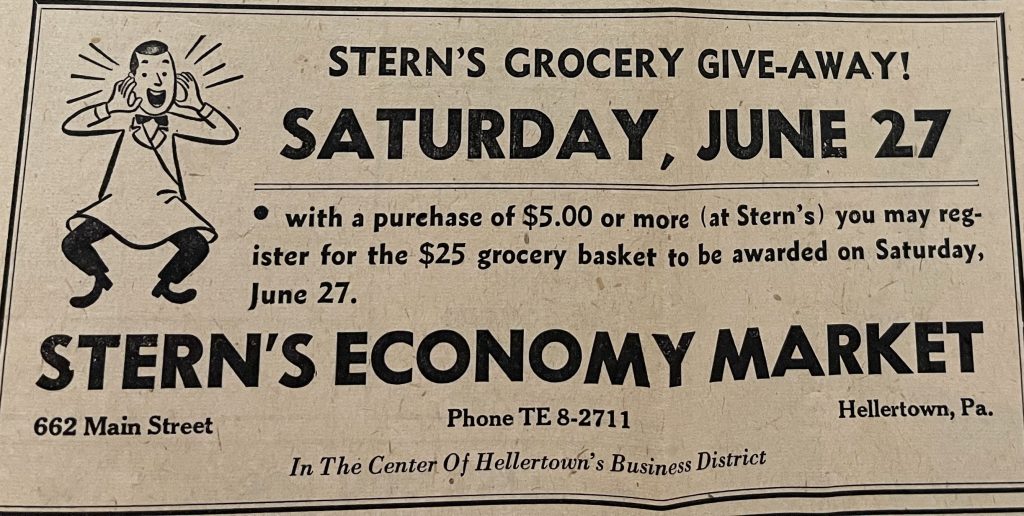
On Main Street, Hellertown, you could buy a gallon of paint for $5.95, port cutlets for 89 cents a pound, a Revelation Catalina swimsuit for $17.95, or stop by Stern’s Economy Market and spend $5 for a chance to win $25 in groceries.
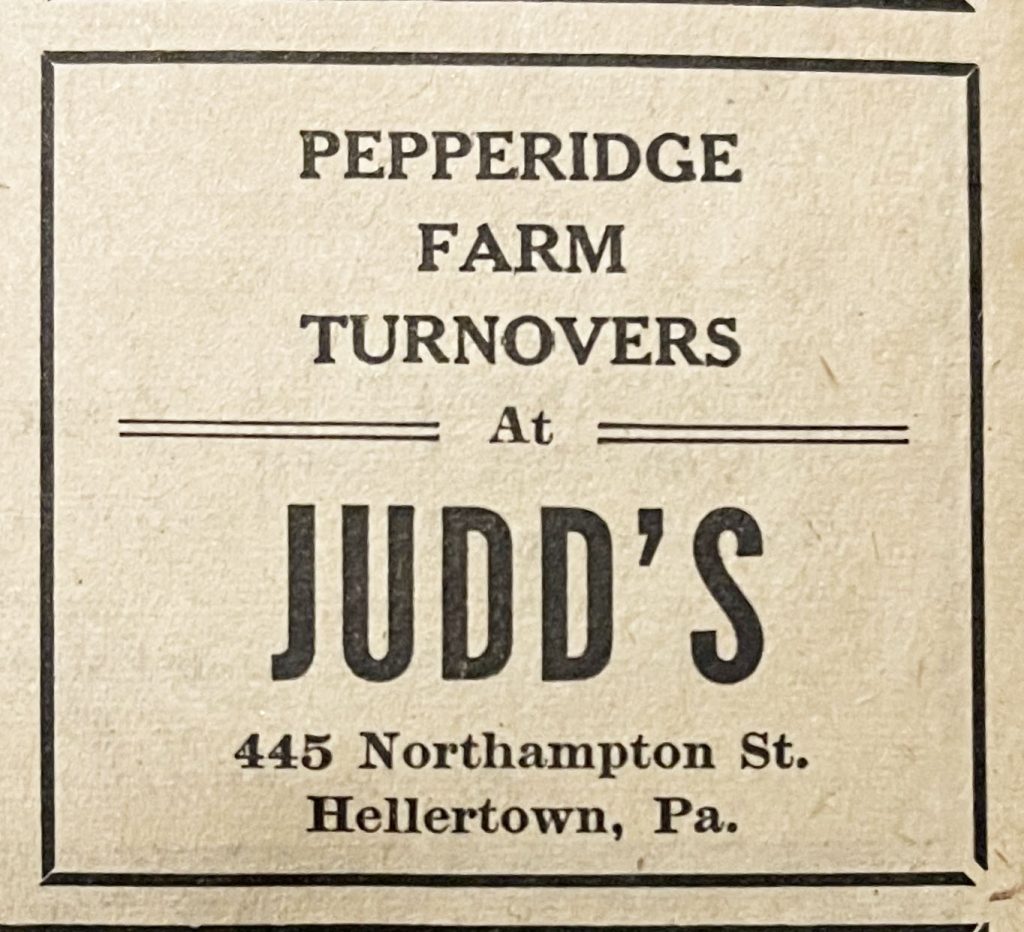
Additionally, you could stop by Judd’s on Northampton Street for a Pepperidge Farm Turnover to enjoy the weekend entertainment at Milt Kurteson’s Playland Park.
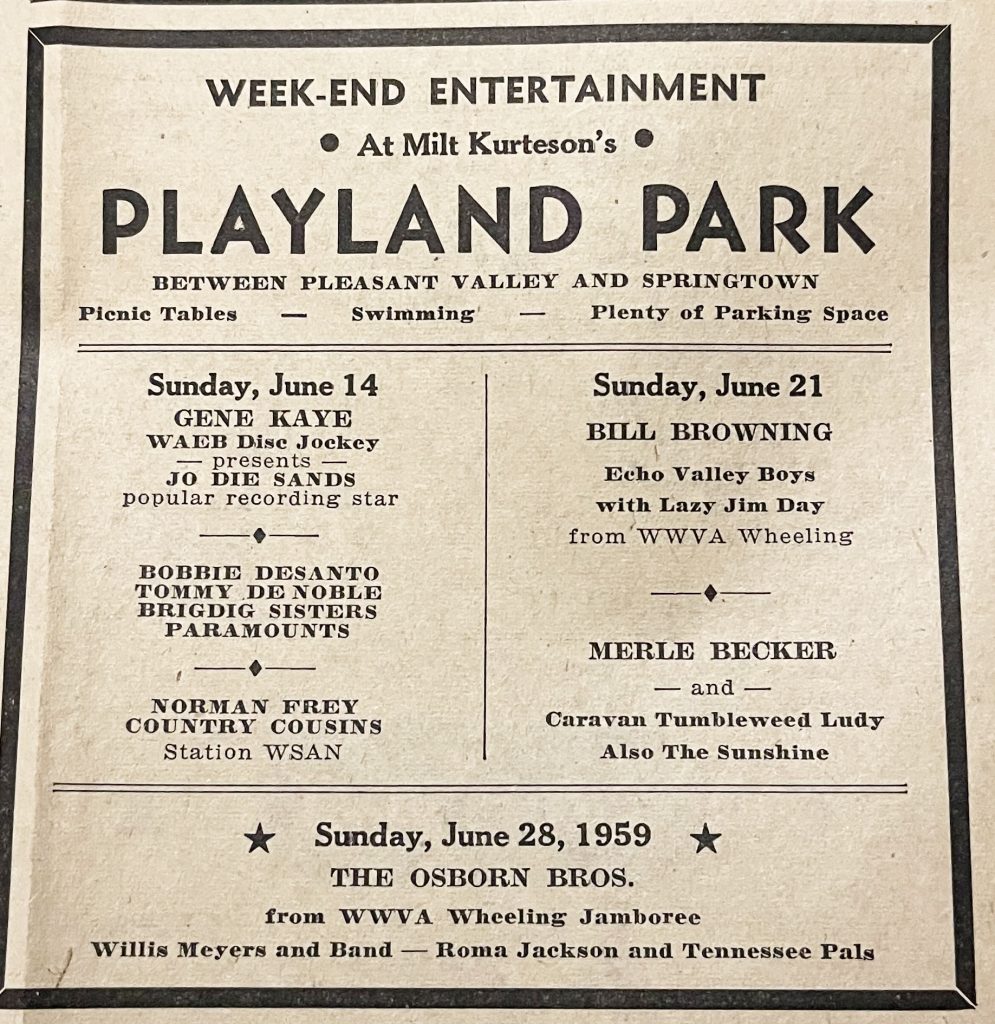
It's News
By M. J. Dimmick, Chairman of Borough Authority
It's News was a column written in Bauder's Shopping Journal. This entry seems timeless, as it was written over 65 years ago.
One of the big headaches in municipalities for years has been the question of garbage removal. Hellertown was the first Borough in the Valley to collect (and dispose of) refuse as a Borough function. Prior to that time, every vacant lot in the community served as a dump and was littered with trash and paper. Not only unsightly but also unhealthy. We realized the only way to have complete cooperation from citizens was to levy an equal assessment against each, and the result justified our action.
Many other methods of garbage collection are in effect in various towns and cities. One scheme is to have the collection done by private collectors on a lump sum basis by annual bidding, and the Borough levies an assessment. This may have the advantage of the Borough not being required to maintain equipment and organization, but it merely provides for the revenue without control. Another method is for the City or Borough to have no fixed program but issues licenses to every Tom, Dick & Mike who chooses to go into the garbage business. In such cases, the homeowner selects his own collector and pays whatever rate the collector chooses to charge. Here again, the municipality has no control. There is the suburbanite who has no such service available to him. He follows the most convenient and cheapest method of dropping a bag of refuse at some isolated spot or in some stream.
Regardless of the type of system of collection in effect, the cities and boroughs of the county have adopted the same method of disposal. Haul it into the neighboring Township. An abandoned stone, slate, or cement quarry has been a convenient and economical spot to dump it. In other cases where no depression in the earth is available, trenches are bulldozed and garbage buried. These schemes served their purpose in days when the Township was sparsely populated, and no one was offended by the odor and nuisance.
It is suggested studies be made of installing incinerators, strategically located and available to all our centers of population throughout the county. Such disposal plants to be within easy access of all cities and towns. Contrary to common belief, present systems of incineration emit very little odor, so there can be no objection by the Townships nor the inhabitants within close proximity of the plants. Properly installed, with modern driveways and landscaping, such a plant can blend with the neighborhood and become an asset rather than a nuisance. To be successful, of course, requires the full cooperation of every city and town, as well as the Townships. The incorporation, operations, and management should be administered by the County through the appointment of an Authority. After all municipalities have contracted to use its facilities, the Authority can issue bonds for the purchase of properties and installation of the plants.
The transportation of garbage from City to plant could be handled in authority-owned, standardized trailers and tractors. Or each municipality could purchase its own trailers to be hauled by Authority tractors on given schedules. The important feature here is that equipment be standardized for easy operation. Charges for disposal could be on a ton basis, so there would be no discrimination.
Within the foreseeable future, garbage dumps will become exceedingly expensive or will not be permissible in the Township, so other means of disposal must be found. Due to the density of population, it is believed by buiding, but a few plants within the County is far more healthful and economical than each City, Borough, or Township operating its own plant. It must be remembered, air pollution, is also becoming a matter of concern in our present centers of population. This problem merits investigation by public and health officials.

